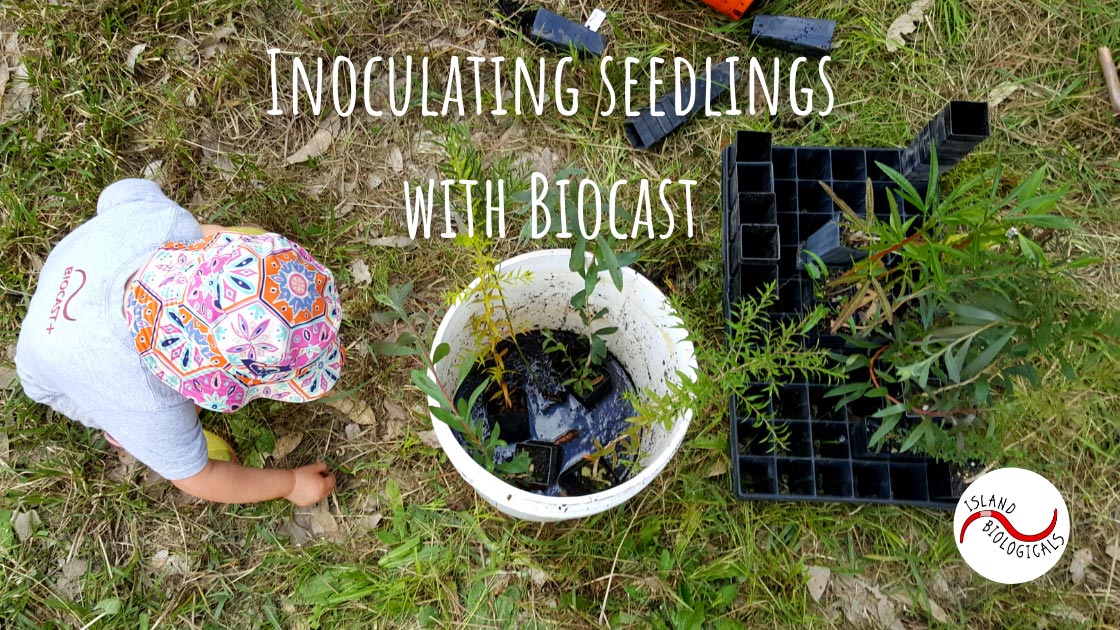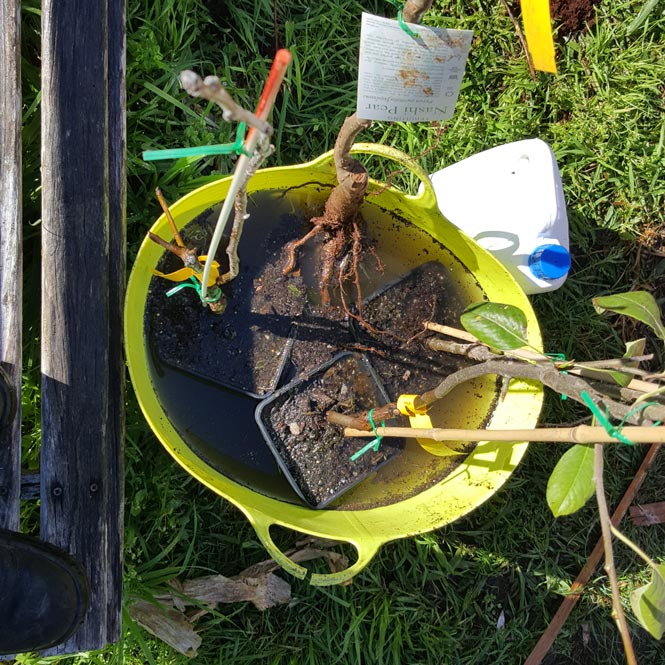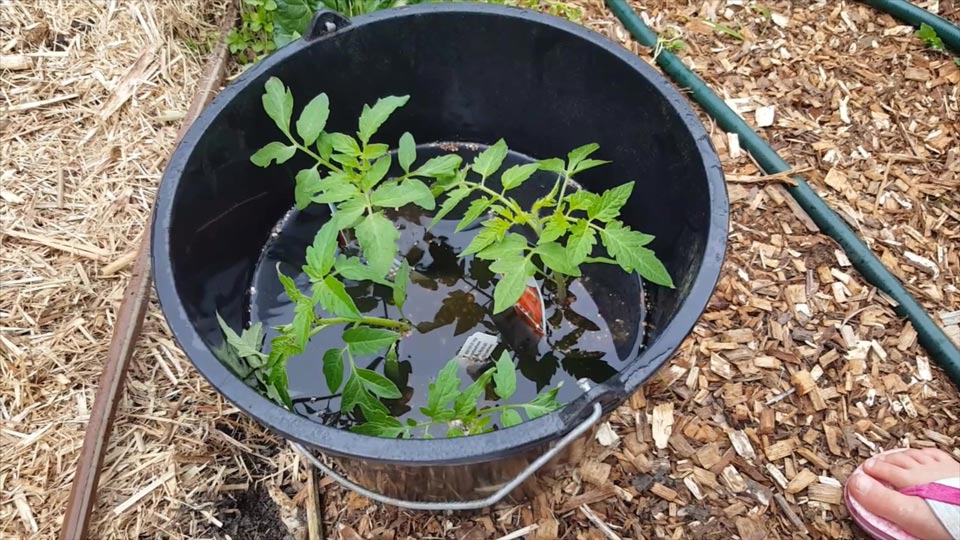
Inoculating seedlings with Biocast
Soaking the roots of your new plant in Biocast just before planting or repotting is a great way to help your plant sail through transplant shock.
What is seedling, or root inoculation?
Inoculation simply means that your seedling or plant roots are being populated with microbes. Some inoculants are single strain or specific multi-strain; however Biocast contains a highly diverse array of bacteria, fungal spores and protozoa to allow you to access the full, balanced benefits of biodiversity.
What happens with root inoculation?
There are lots of microorganisms and natural compounds in Biocast which assist the plant. To the best of our understanding (which we expect to be incomplete, because this is such a rapidly expanding field of science at the moment!) here is (some of) what’s going on:
- The area around the roots gets populated with a diverse array of plant-relevant, beneficial microbes. It is particularly opportunistic to do this at planting as nursery-grown plants are often grown in sterile conditions, and soil you’re planting into can be highly disturbed and therefore not have the high microbe diversity that you want. These microbes will play a number of functions as your plant grows, helping to keep it healthy and nourished. Microbes have even been shown to stimulate the growth of new plant roots through a phenomena called the ‘rhizophagy cycle’. In this process, plants take bacteria in through their roots, consume the nutrients, then spit them out again via new root hairs which these bacteria have stimulated. I.e., the microbes have fed the plant and encouraged new root growth! (Here’s a great webinar on the rhizophagy cycle with lead researcher, Dr James White: https://youtu.be/yMr3_tGeAu8)
- Autoinducers, which are short chemical signals (AKA signaling molicules) released by microbes have the potential to help the plant establish relationships with other microbes in their new environment. For example there are signals that induce swarming of other microbes to the site, other signals that aid the establishment of biofilms, and even switch on genes in plants to allow them to be receptive to colonisation by mycorizal fungi or rhyzobial bacteria. This paper by Zhuang et. al. is one of the best we’ve found on the subject.
- New root growth is also stimulated by the plant growth hormones which are naturally found in the worm cast we extract our Biocast from. Established roots = established plant.
- As an extract of worm cast it also contains other beneficial biostimulatory compounds to help get your plant off to its best start: connected to the surrounding soil and wider environment for nutrition and other needs, interacting with other plants (yay, friends!), equipped to compete against root-borne pathogens, and the main thing – up and growing straight away with reduced risk of transplant shock. These compounds include autoinducers (signalling molecules), fulvic acid, enzymes, and small amounts of bioavailable minerals.
How to do it:
Inoculating your plant is as simple as soaking the roots in a bucket of diluted Biocast until they’re wet through. The following root inoculation method is what we use for all transplants – veggies, fruit trees, natives, flowers, you name it. Because Biocast is a biostimulant, not a fertiliser, it is gentle enough to be used on Australian natives.
Method:
- Use Biocast Part A and Part B. Add them to your bucket following the volumes on the label, but dilute with water 10:1.
- Immerse the plant so the roots are covered. We find the most convenient way is to put the plant in the Biocast while you prepare the hole.
Tips:
Root-bound plants will benefit from a longer soak, even up to 24 hours.
If you soak your plant but run out of time to put it in the ground, that’s ok. Just be aware that you have activated root growth and you’d be best to get it in as soon as possible. Worst case scenario, if you don’t get back to it for a few weeks (it’s happened to us), just give them another soak and off you go. After all, Biocast is suitable for use on pot plants!
The same inoculation solution can be used for multiple plants on the same day. If there is any left when you are finished you can use it to water in your new plants. If you are doing more the following day, start with a fresh batch.


We made a little demonstration video while we were planting tomatoes in our home garden, showing how we do it. Click below to view.
If you have any questions about using Biocast, as always please don’t hesitate to get in touch.
To get your seedlings off to a great start, you can purchase Biocast via our online store.
